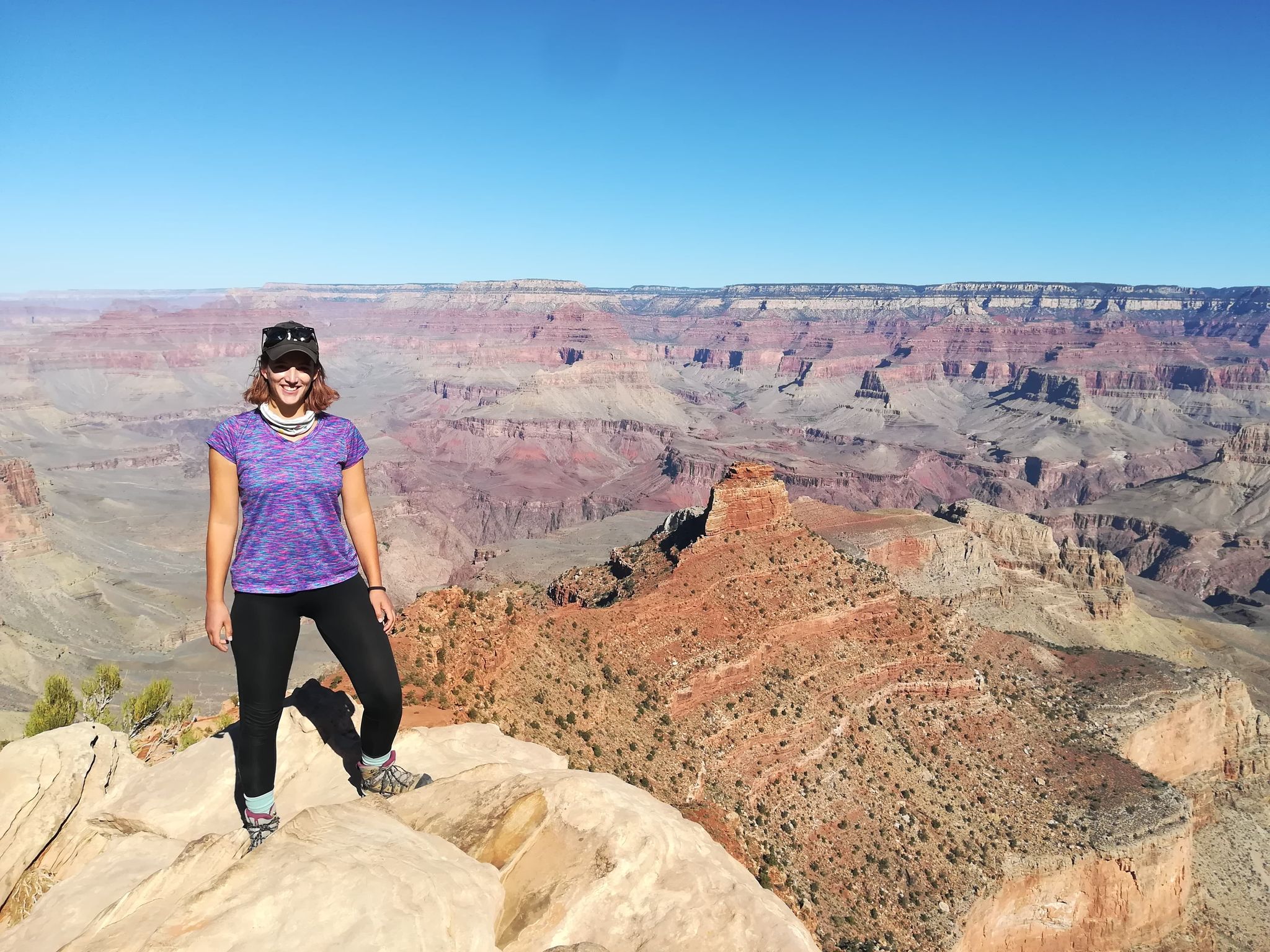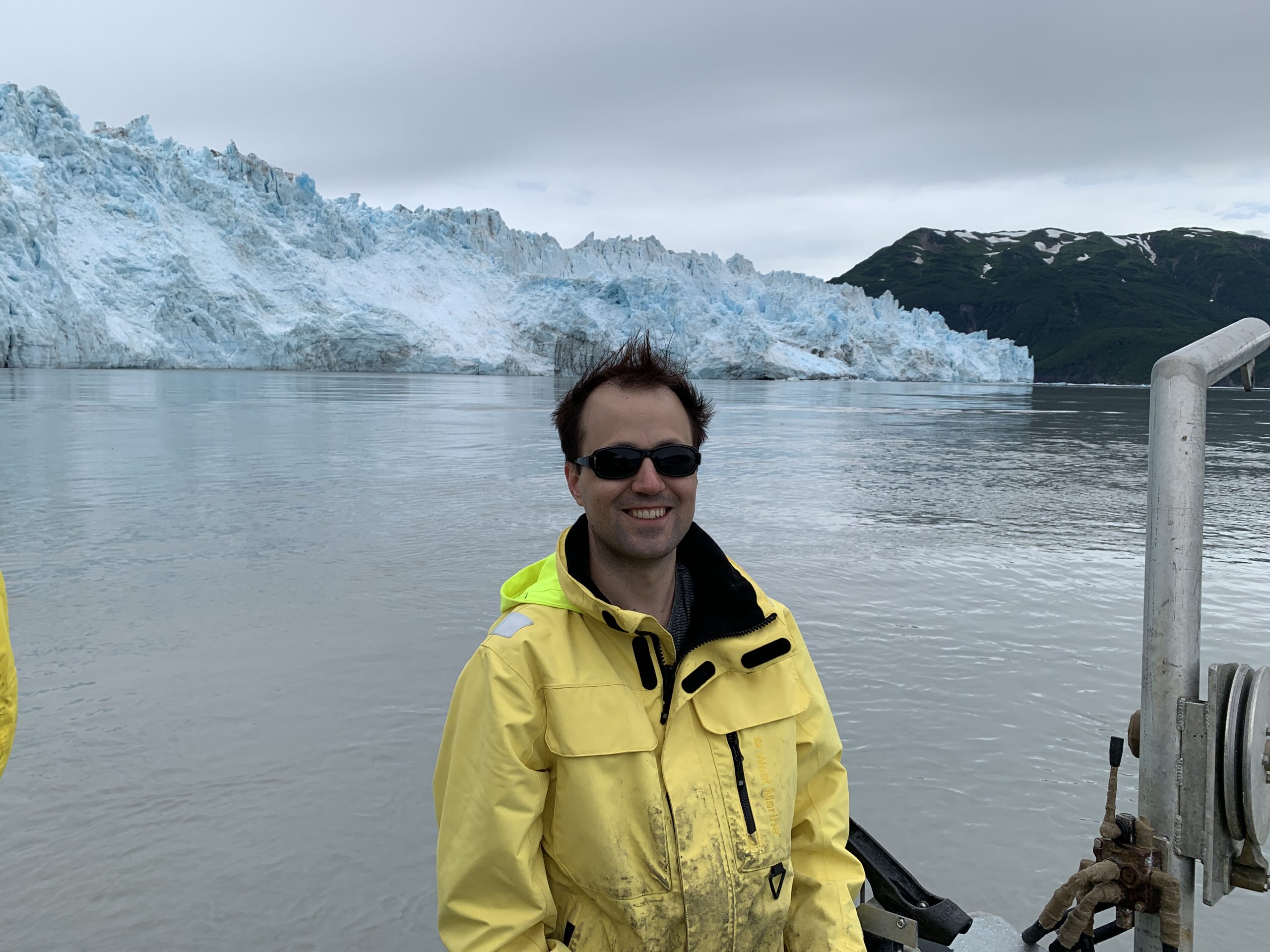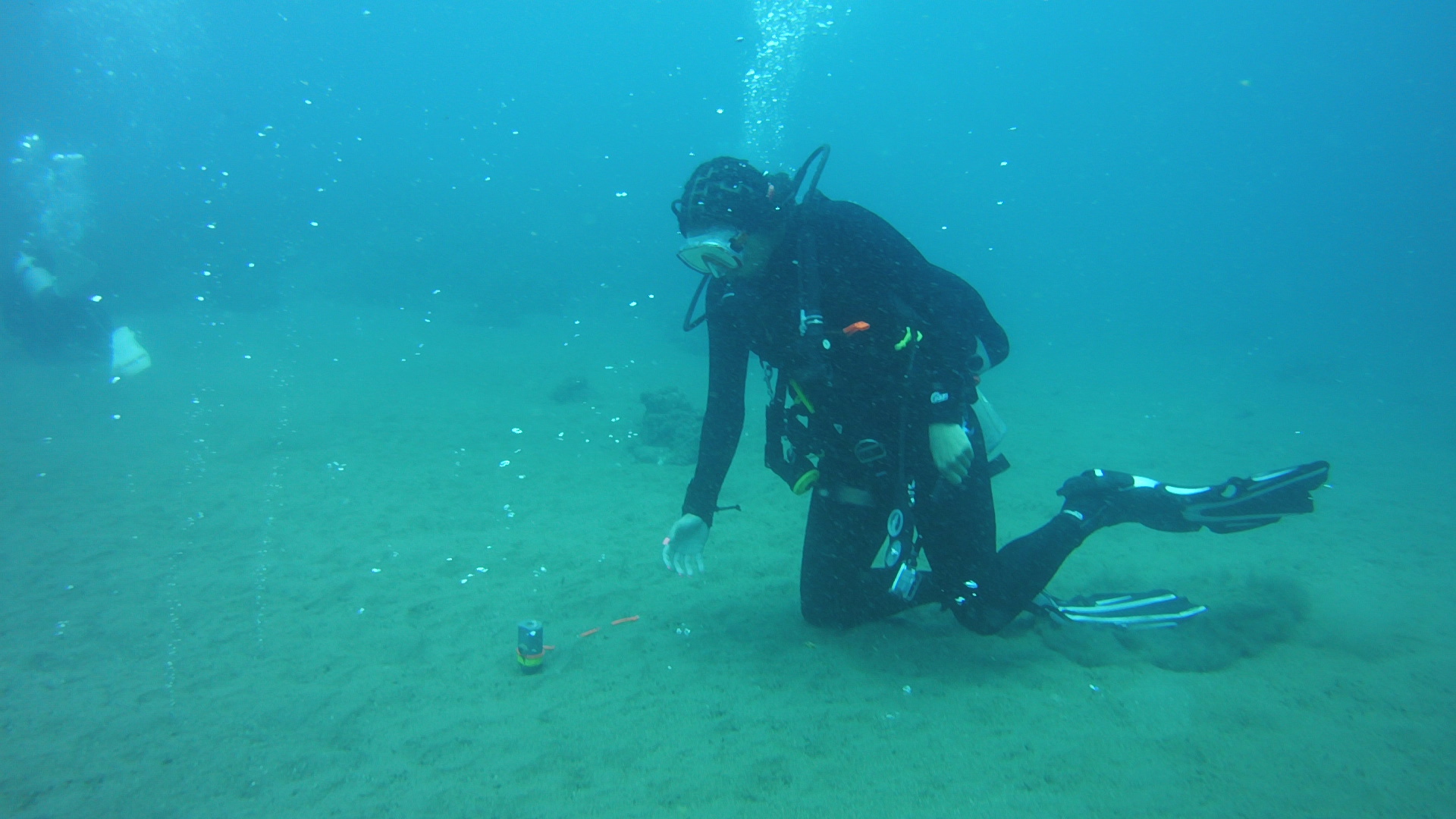December 5, 2022
The cost of field trips and field gear can be a barrier to entry or retention in the geosciences (Abeyta et al., 2021). In this post from your Science Y’all editors, we highlight some opportunities to help alleviate field work costs. (with special thanks to Ebony Williams for sharing her field photos).
Many geoscientists rely on observations seen in nature (or, “the field”, as we call it) to investigate natural processes—from sedimentation to ice sheet behavior to deformation recorded in rocks at the surface today. Field work can last anywhere from days to months and students may embark on journeys across isolated regions to enhance our understanding of geoscience. However, the cost of field work is a barrier to entry and retention in the geosciences (Abeyta et al., 2021). The costs range from the opportunity costs associated with taking time off from paid employment, to fronting expenses for travel and food (to be reimbursed when you return from field work), to buying the necessary gear to keep yourself and the team safe and comfortable in the field (especially if the work involves camping or extreme environments).
We wanted to highlight some of the opportunities we currently have here within Austin, at the University of Texas (UT), and at the Jackson School of Geosciences (JSG), to help out with field work costs. This post was originally inspired by Dr. Julia Cisneros’ post on her own blog in 2021— Tips for getting outdoor gear on a budget. Julia is a postdoctoral researcher affiliated with JSG and the UT Institute for Geophysics. In her post she has curated a tried-and-true approach for obtaining second-hand field gear. We highly recommend you check out her post for new techniques in gear hunting!
In our post here, we highlight grants that cover travel costs and tips relating to obtaining cheap gear. Do you know of a funding source or other economical tips related to field trips and gear that aren’t covered here? Write to us at utscienceyall@gmail.com!
The following list is not exhaustive, we’ve just highlighted the information for a few grants at JSG & UT. Many of these financial assistance programs rely on contributions from donors, for which we’re extremely grateful!
There are tons of funds out there. Examples of external field funds include the Association for Women Geoscientists Brunton Awards (a Brunton compass and up to $1000 for field expenses), the GSA research & travel awards, and the Lewis and Clark Field Research Funds (up to $5000). For further funding sources, we recommend you check out funding opportunities listed on the JSG website and CPSH website, look up funding opportunities from different societies (see example societies on the GSEC website), or check out this very exhaustive list of graduate funding opportunities compiled on the JSG’s Geoscience Empowerment Network (GEN) website (with a specific travel section!). You can also check out organizations such as Field Inclusive who support marginalized and historically excluded individuals who engage in field work (including support through grants).
Financial assistance is available for undergraduates taking a field course that contributes towards the course requirements (e.g. GEO 660 Field Geology). The website states “Availability of funds, award criteria, and individual award amounts may vary from year to year. Academic standing and performance as well as expected graduation date are most often included in the review process.”
These funds are awarded by application and are available for research that is part of an MS or PhD dissertation project. The application is typically due within the first few weeks of the start of each semester, and the form can be found here amongst the “Graduate Student Forms” section of the JSG website. There is no limit to the funds you can apply for, but the most economical options should be used wherever possible. The funds may also be used to support field assistants but cannot be used to buy equipment or pay for lab analysis (for lab work there is the JSG Analytical Costs Fund). Get in contact the Graduate Student Coordinator if you have any questions.
Emily Bamber was awarded OCRF for Fall 2022 and is happy to talk about her application if you email her.
The Jackson School will also provide up to $1,000 per academic year to “match” external grants that have been awarded to students. The external funding must be for research purposes (analytical costs, field work, or data purchase), and not for conference attendance. You can find the electronic application for this fund on the JSG website amongst the “Graduate Student Forms”. Get in contact the Graduate Student Coordinator if you have any questions.

If you will be doing a lot of field work and/or you enjoy the outdoors anyway, it is probably worth investing in your own gear as you may save money in the long-term. If this is the case for you, we highly recommend you check out Julia Cisneros’ post on her own blog “Tips for getting outdoor gear on a budget”, where Julia details her approach for obtaining second-hand field gear. She also recommends you plan early and even ask your friends and family for gear as gifts if they’re able to help. There are tons of second-hand stores in Austin where you could begin your search following her guidance.
Another option for obtaining second hand gear in Austin is to check out your local “Buy Nothing” group. Ranging from furniture to food, art, books, and stationary, people post items that they no longer need, (some of which are pretty high quality!). You can also post asking for equipment, either to keep or to borrow. The buy nothing principle is all about giving away for free (i.e., not getting anything in return!). Facebook Marketplace is also a great place to check for people in your local area re-selling their field gear at cheaper prices (there may even be local gear re-sale groups). You may also consider purchasing refurbished gear for use in the field, such as refurbished electronics (e.g. iPads, cameras), but it’s also possible to buy refurbished field gear (e.g. Patagonia, North Face, Arc’teryx).
If there’s a vital piece of field gear that you think is worth purchasing new, there are a few ways to save money:
First, figure out what the best gear for your purposes is. We recommend you visit a store, for example REI, that sells outdoor equipment and speak to the shop assistants about what you need and your budget. They will usually be able to recommend the best quality gear within your budget (which you can then shop around for online and elsewhere to get the best price).
Secondly, see if you can get a ‘Pro Deal’ with a retailer or brand, where outdoor gear and items are offered at a discount (up to 40 or 50%) to outfit industry professionals. Many field geologists have forged skills related to outdoorsmanship such as rock climbing, scuba diving, or running at a competitive or professional level and in turn, have also acquired pro deals with outdoor companies. However, pro deals are not just limited to athletes and advocates. Did you know that if you have a federal position, a public servant appointment, or work as an educator, you can also be eligible for a pro deal? Companies such as Outdoor Prolink, which houses brands such as Black Diamond, Osprey, La Sportiva, Mammut and others, make obtaining specialized gear (e.g. waterproof pants, rain jackets, fleeces, wetsuits, etc) more accessible to geology graduate students.
Thirdly, after making a purchase we recommend that you pay attention to and carry out any care instructions (e.g. cleaning, conditioning, re-waterproofing) to keep your gear in top form AND check the warranty policy, as some brands offer lifetime warranties, replacements, and/or repair programs if your gear is not up to scratch or gets damaged. You often need to sign up for warranties and register your gear soon after purchase. This can ensure you can get repairs or a quality replacement for your gear if it’s faulty and/or if it’s worn out in the future, for free or fairly cheap. Examples of brands that offer lifetime warranty and/or repairs include Osprey (a great brand for rucksacks) and Craghoppers (a great brand for outdoor clothes).
Last but not least, consider asking your research group, student and postdoctoral peers, and advisors for help and/or to borrow field gear from them. Some research groups and units have equipment available for use by group members. Many projects also have funding built in for field equipment, so check with your advisor before purchasing any new equipment. Additionally, most of us understand the costs associated with field work and would be more than happy to help our colleagues! Just bear in mind that if you’re borrowing someone else’s equipment, you will need to take good care of it or be prepared to pay for cleaning costs or a replacement.

Another option instead of buying outdoor gear for the field is to rent equipment, especially for large purchases such as tents, sleeping bags, and roll mats. This could be an option where field work grants do not allow you to buy equipment, because they may allow you to rent equipment (e.g. a tent, and you can make a stronger case for it if it’s cheaper than the nearest hotel!). Always check for restrictions before committing to any costs. We’ve included the rental stores that we’re aware of, but check the local city/town you’re travelling through, as there may be local stores that provide rental (e.g., Emily Bamber has previously rented equipment from Peace Valley Surplus in Flagstaff, AZ).
A side note: If you’re feeling particularly interested (and not too busy), it might be helpful to set up a JSG-based geological field gear exchange…?
The University of Texas’ Rec Sports Outdoor Center offers equipment rental, including tents, sleeping bags, camp cooking equipment, backpacks, hammocks, and lanterns (as well as paddle boards if you find yourself needing that for fieldwork…). As an example, it could cost $35 to rent a 2-person tent for a week. Have you used this service? Contact us if you have any advice that we could add to this article!
We collected the following list by using google. Do you have reviews of these services? Do you have other sites to recommend? Let us know!

Another final possibility similar to renting, is to purchase equipment and return it following field work. This may be particularly useful when your field trip is of short duration, and there is specific equipment that you wouldn’t otherwise need (i.e., a compass with a specific function, or gear for extreme weather/temperature). Unfortunately, this strategy also requires having the funds available to make the initial purchase and it is a risky strategy since you must check the returns policy and you must ensure that the purchases you’re planning on returning meet the requirements for return. For instance, you’ve got to make sure the gear does not get damaged or soiled (and sometimes it means you can’t remove any labels or tags), otherwise you may not get your money back. If you’re an REI member, returns can be made up to 1 year from purchase, and Jana Alabdullatif says she “find[s] them to be quite forgiving with the condition.”
And our last tip: If you decide you’d like to keep the equipment, it’s worth checking if that equipment ever goes on sale within the return period. You may be able to return your existing gear bought at a higher price, and re-purchase the same gear at the lower sale price.
Hopefully you found this post helpful. Do you know of a funding source or other economical tips for obtaining field gear that we didn’t cover here? Write to us at utscienceyall@gmail.com and we can add them to the article!